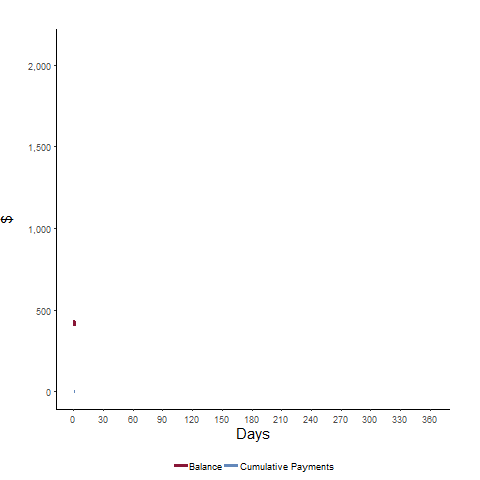Loan sharks, payday lenders, high cost lenders, they promise easy access to money. While these loans are convenient, they don’t come cheap, often leading to higher levels of debt. This industry has a substantial and growing presence in our communities.
Regulation is currently on the table, but will it go far enough? Recent BERL research for FinCap has considered the growth in the high-cost lending market, and the associated harms. The report can be found here.
Under the loosely regulated current market, there are countless examples of people finding themselves in substantial financial distress as a result of money borrowed from loan sharks, payday loans or third tier lenders.
The following graph shows how quickly these loans can get out of hand. A borrower took out a quick loan of just $400 dollars to be repaid over a month, but the loan cost much more, and took much longer than that.
The costs of a $400 loan

With just $400 borrowed, the borrower was scheduled to complete the loan in 4 weeks, paying a total amount of $525. After falling a few days behind on payments, the rescheduling fees, default fees, payment fees made paying down the loan impossible given their financial position.
After 30 days, and paying the full principal of the loan, the high fees and penalties had prevented them from reducing their loan balance. The loan balance had actually grown to more than $500.
After almost a year of contributions and penalties, the borrower had paid more than four times the original loan, yet their outstanding balance was now $2,000.
Our investigation has shown that while the proposed repayment cap of 100 percent of the original loan balance will be helpful, more needs to be done to protect vulnerable communities.
Our report identifies nine other policy recommendations, including caps on fees and interest rates, and better information for borrowers.